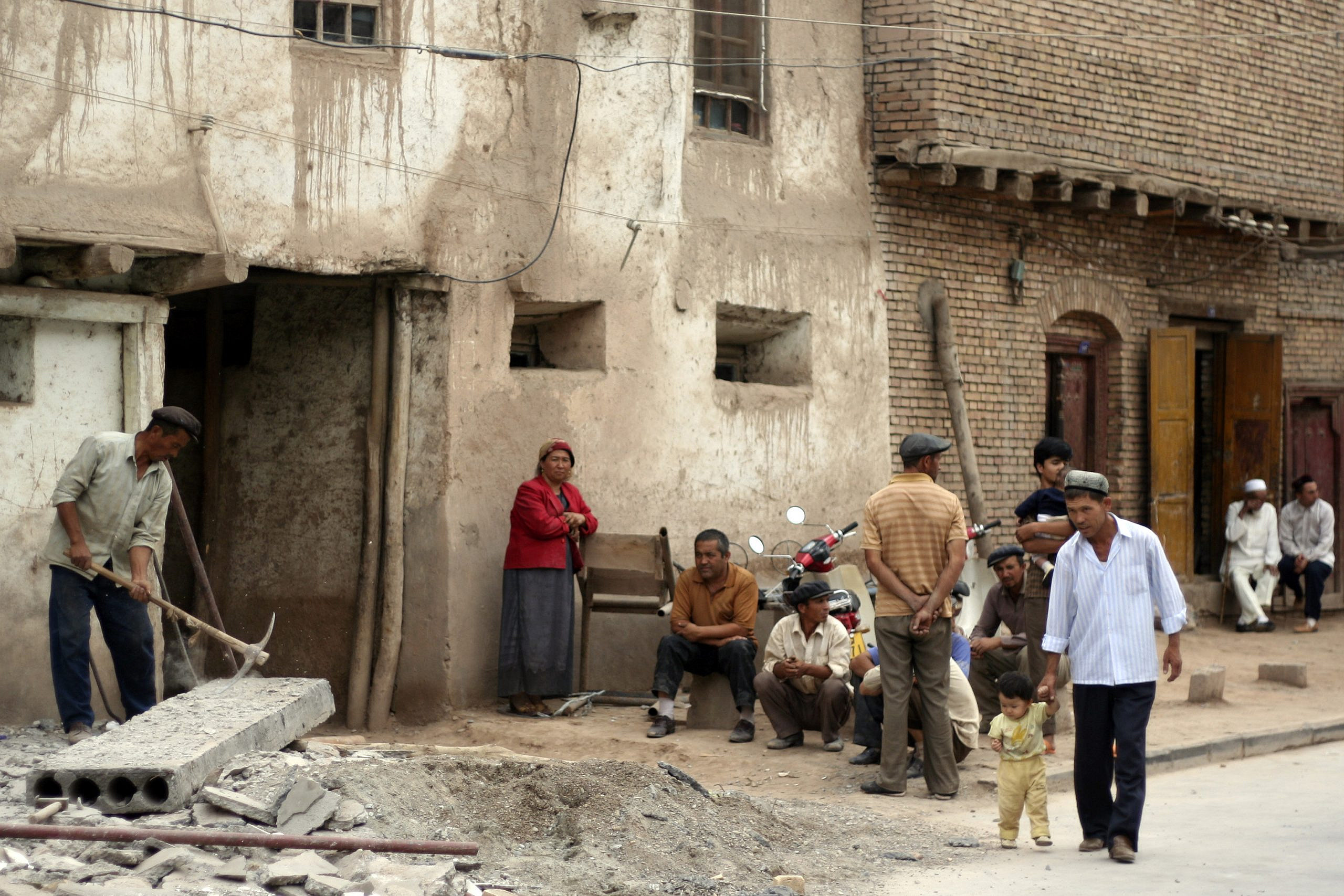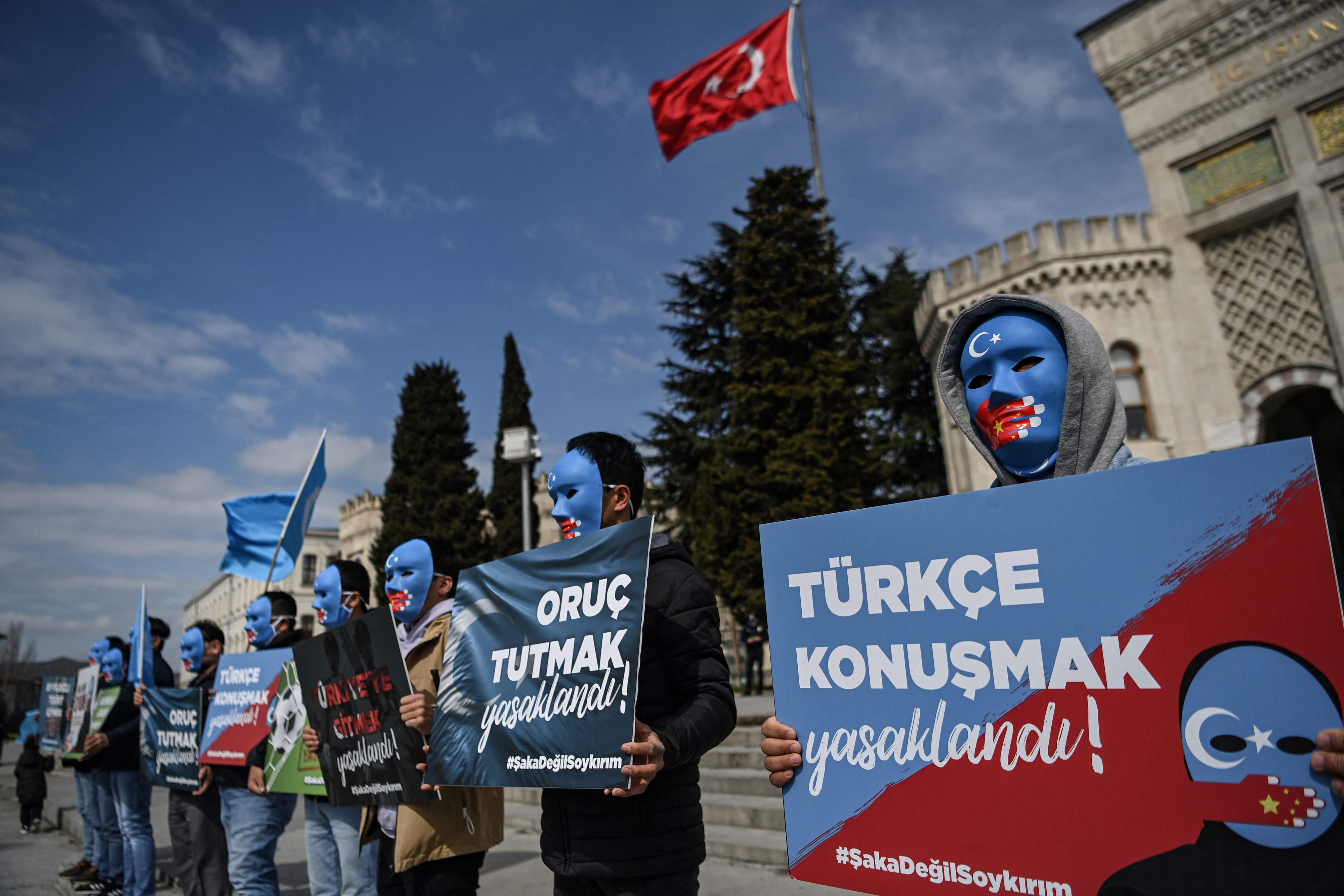Uyghurs In China

The Uyghurs, a Turkic ethnic group native to Central and East Asia, have a long and complex history, especially in relation to their current situation in China. With a rich cultural heritage and a unique identity, the Uyghurs have faced significant challenges and international scrutiny due to their treatment within the Chinese region of Xinjiang. This article delves into the history, culture, and contemporary issues surrounding the Uyghurs in China, shedding light on a topic of global importance.
The History and Origins of the Uyghur People

The Uyghurs trace their roots back to ancient Turkic tribes that inhabited the vast steppes of Central Asia. Their early history is intertwined with the rise and fall of various empires, including the Turkic Khaganate and the Uyghur Khaganate, which flourished in the 8th and 9th centuries. These early Uyghur civilizations were known for their advanced agriculture, vibrant trade networks, and rich cultural traditions.
The Uyghur people have a deep connection to their ancestral lands, which stretch across present-day Xinjiang Uyghur Autonomous Region, parts of Central Asia, and even into historical regions like Mongolia and Siberia. Their language, Uyghur, belongs to the Turkic language family and has its own unique script, which evolved over centuries.
Throughout history, the Uyghurs have faced periods of both independence and rule by various empires, including the Mongols, the Qing Dynasty, and eventually, the People's Republic of China. It was during the Qing Dynasty that the region of Xinjiang became officially incorporated into the Chinese empire, setting the stage for the complex relationship between the Uyghurs and the Chinese state.
Uyghur Culture: A Rich Heritage

Uyghur culture is renowned for its diverse and vibrant expressions, encompassing art, music, literature, and culinary traditions. The Uyghurs have a deep appreciation for poetry, with a rich tradition of oral storytelling and epic poems that have been passed down through generations.
Music plays a significant role in Uyghur culture, with instruments like the dutar (a long-necked lute) and the rawap (a stringed instrument) being integral to their musical heritage. Uyghur music often features complex rhythms and melodies, reflecting the diverse influences of Central Asian, Persian, and Chinese musical traditions.
The Uyghurs have a unique culinary tradition, known for its use of spices, fruits, and nuts. Their cuisine often incorporates lamb, rice, and flatbreads, with famous dishes like polo (a pilaf-style rice dish) and laghman (a hand-pulled noodle dish) being popular among locals and visitors alike. Uyghur tea culture is also renowned, with unique brewing techniques and a variety of tea types, including brick tea and milk tea.
Uyghur art, including painting, calligraphy, and carpet weaving, showcases intricate patterns and designs, often inspired by nature and Islamic motifs. The traditional Uyghur dance, known for its energetic and graceful movements, is a vibrant expression of their cultural heritage.
Despite facing various challenges, the Uyghurs have managed to preserve their cultural traditions, passing them down through generations, ensuring that their unique identity remains vibrant and resilient.
The Uyghurs in Modern China: Challenges and Controversies
The relationship between the Uyghurs and the Chinese state has been a subject of intense scrutiny and debate in recent years. Since the late 20th century, the Uyghur population in Xinjiang has faced increasing restrictions and surveillance, leading to widespread concerns about human rights abuses and cultural erosion.
In response to perceived threats of separatism and terrorism, the Chinese government has implemented a range of policies that have significantly impacted the Uyghur community. These policies include mass surveillance, restrictions on religious practices, and the establishment of controversial "re-education" camps, which have been accused of human rights violations and cultural assimilation.
The international community has expressed deep concern over the treatment of Uyghurs in China, with numerous reports and studies documenting widespread human rights abuses, including arbitrary detention, torture, and forced labor. The United Nations and various human rights organizations have called for an end to these practices and for the Chinese government to respect the rights and freedoms of the Uyghur people.
Uyghur Language and Education
The Uyghur language, an integral part of Uyghur identity, has faced significant challenges in recent years. In an effort to promote Mandarin Chinese as the dominant language, the Chinese government has implemented policies that have led to a decline in the use of Uyghur in education and public life. This has sparked fears of linguistic assimilation and the erosion of Uyghur cultural heritage.
Uyghur-medium education, once a cornerstone of Uyghur identity, has been increasingly replaced by Mandarin-focused curricula. This shift has led to concerns about the preservation of Uyghur language skills and the ability of future generations to fully understand and appreciate their cultural heritage.
Economic Disparities and Discrimination
Economic disparities and discrimination have been persistent issues for the Uyghur community. Despite being native to the region, Uyghurs often face challenges in accessing economic opportunities, with many reports of discrimination in employment and business ownership. The Chinese government’s “Go West” policy, aimed at developing western regions, has led to an influx of Han Chinese migrants, further exacerbating economic disparities and cultural tensions.
International Response and Advocacy
The international community has played a crucial role in bringing attention to the plight of the Uyghurs. Human rights organizations, academics, and activists have worked tirelessly to document and raise awareness about the human rights situation in Xinjiang. International media coverage and the efforts of Uyghur diaspora communities have also contributed to keeping this issue in the global spotlight.
Despite these efforts, the Chinese government has consistently denied allegations of human rights abuses and has defended its policies as necessary for countering terrorism and promoting social stability. The international response to this situation remains a complex and ongoing challenge, with calls for increased pressure on China to respect the rights and freedoms of the Uyghur people.
The Future of the Uyghurs: A Complex Outlook
The future of the Uyghur people is a topic of much speculation and concern. With ongoing human rights abuses and cultural erosion, the long-term prospects for the Uyghur community are uncertain.
International advocacy and pressure on the Chinese government to respect human rights and cultural diversity are crucial for the future of the Uyghurs. Increased dialogue and engagement between the Uyghur community, the Chinese government, and the international community could potentially lead to positive changes and the preservation of Uyghur culture and identity.
However, the path forward is fraught with challenges. The Chinese government's policies towards the Uyghurs are deeply entrenched, and any significant shift in approach would require a fundamental reevaluation of its current strategies. Additionally, the global geopolitical context and the complex relationship between China and the international community further complicate the prospects for meaningful change.
In conclusion, the Uyghurs in China represent a complex and urgent human rights and cultural preservation issue. The international community must continue to advocate for the rights and freedoms of the Uyghur people, while also recognizing the need for constructive dialogue and engagement to find sustainable solutions. The future of the Uyghurs depends on a delicate balance between these competing interests, and the world will be watching to see how this unfolding drama plays out.
What are the key human rights concerns regarding the Uyghurs in China?
+Key human rights concerns include mass detention in re-education camps, torture and ill-treatment, restrictions on religious practices, forced labor, and cultural assimilation policies.
How has the international community responded to the Uyghur situation in China?
+The international community has expressed deep concern, with various human rights organizations, governments, and the United Nations calling for an end to human rights abuses and the release of detainees. Sanctions and diplomatic pressure have been imposed by some countries.
What are the potential long-term impacts of the current situation on the Uyghur community?
+Long-term impacts could include the erosion of Uyghur culture, language, and identity, as well as psychological trauma and social disintegration within the community. Economic disparities and political marginalization may also persist.



